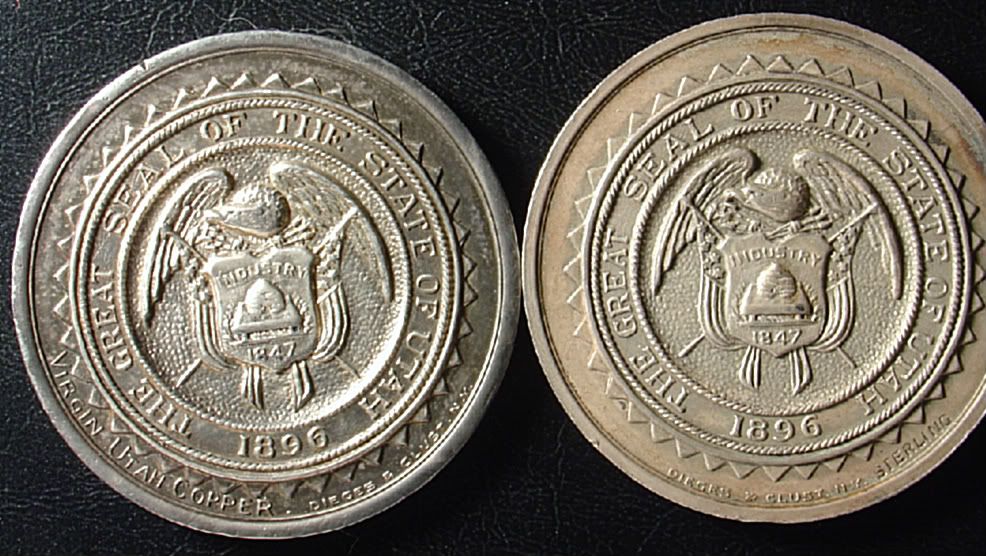SC$ fans, Can you pic the real HK-358 from the fake? Answer in first post
 DUIGUY
Posts: 7,252 ✭✭✭
DUIGUY
Posts: 7,252 ✭✭✭

One on the viewers left is the fake silver plated copper. Real one is on the right.
Fake weighs 432.1 grains. Authentic one marked sterling at 5:00 weighs 493.8 grains.

“A nation can survive its fools, and even the ambitious. But it cannot survive treason from within. An enemy at the gates is less formidable, for he is known and carries his banner openly."
- Marcus Tullius Cicero, 106-43 BC
- Marcus Tullius Cicero, 106-43 BC
0
Comments
I'd have to say that the left pic looks like a more natural silver color, so if I had to pick one, that's my pic for the real one.
it too is real but just not a silver example. But if one is real the other is fake then I'll go left.
bob
I have a question about the coin itself
What is a "Alaska-Yukon Pacific Exposition Utah Exhibit"?
In 1909, I would not have thought that very much was goin' on in Utah.
I'm not convinced that either one is a fake - need better pictures.
"Everything is on its way to somewhere. Everything." - George Malley, Phenomenon
http://www.american-legacy-coins.com
Obviously I know the answer, and I won't reveal the truth. But I will answer a few of the questions posed.
adamlaneus: You are probably right, not much going on in Utah. But in Alaska, things were hopping. They held a huge expo in 1909 at which the State of Utah had a pavillion, building, or an exhibit somewhere. This is common fair at the World's Fairs including the 1893 Columbian Expo and the 1904 Louisiana Purchase Expo. Many times, these medals were sold prior to the Fair to raise money to participate, build the biulding, etc. Silver issues are pretty rare. The more common is copper.
dcarr and coindeuce: One is plated copper and the other not. Plating is a cheap way to turn a common piece into a much more valuable item as you both probably know. Get a roll of the copper variety at let's just say 50 cents a piece (20 in a roll, total investment $10 maybe) (I have no idea of what price they could have been bought for or if they even came in rolls. I'm just proposing a possible scenario) and plate them with silver. Sell for $500 each even back then. Let's just say it's $100 each. Just made $1990 which is obviously big money in 1909 for very little effort. As I suggested, multiply that by 5 and you are set for a long time!
I'm going with the one on the left being plated and the one on the right as being the real deal.
peacockcoins
"Everything is on its way to somewhere. Everything." - George Malley, Phenomenon
http://www.american-legacy-coins.com
But then, I could be wrong...
It just reinforces my belief that you can't tell much about the quality of a coin from a single photograph.
And that different monitors will produce dramatically different images.
Remember Jay's "which saint do you like the most" thread? Well, when I used my various monitors, I would always end up with different answers to that question.
Ack.
- Marcus Tullius Cicero, 106-43 BC
The specific gravity of the plated piece and a regular copper piece were tested and found to be the same, though an x-ray test determined the plated piece to be silver. The x-ray test was done awhile back and the result makes sense. The x-rays sample the surface, not the core. The surface is silver. However, with the medal stating right on it Virgin Utah Copper and a true silver one that I found for DUIGUY stating Sterling, it made sense to question the authenticity of the plated piece. The specific gravity gave it away.
So now DUIGUY owns a copper, a silver, and a silver-plated copper.
- Marcus Tullius Cicero, 106-43 BC